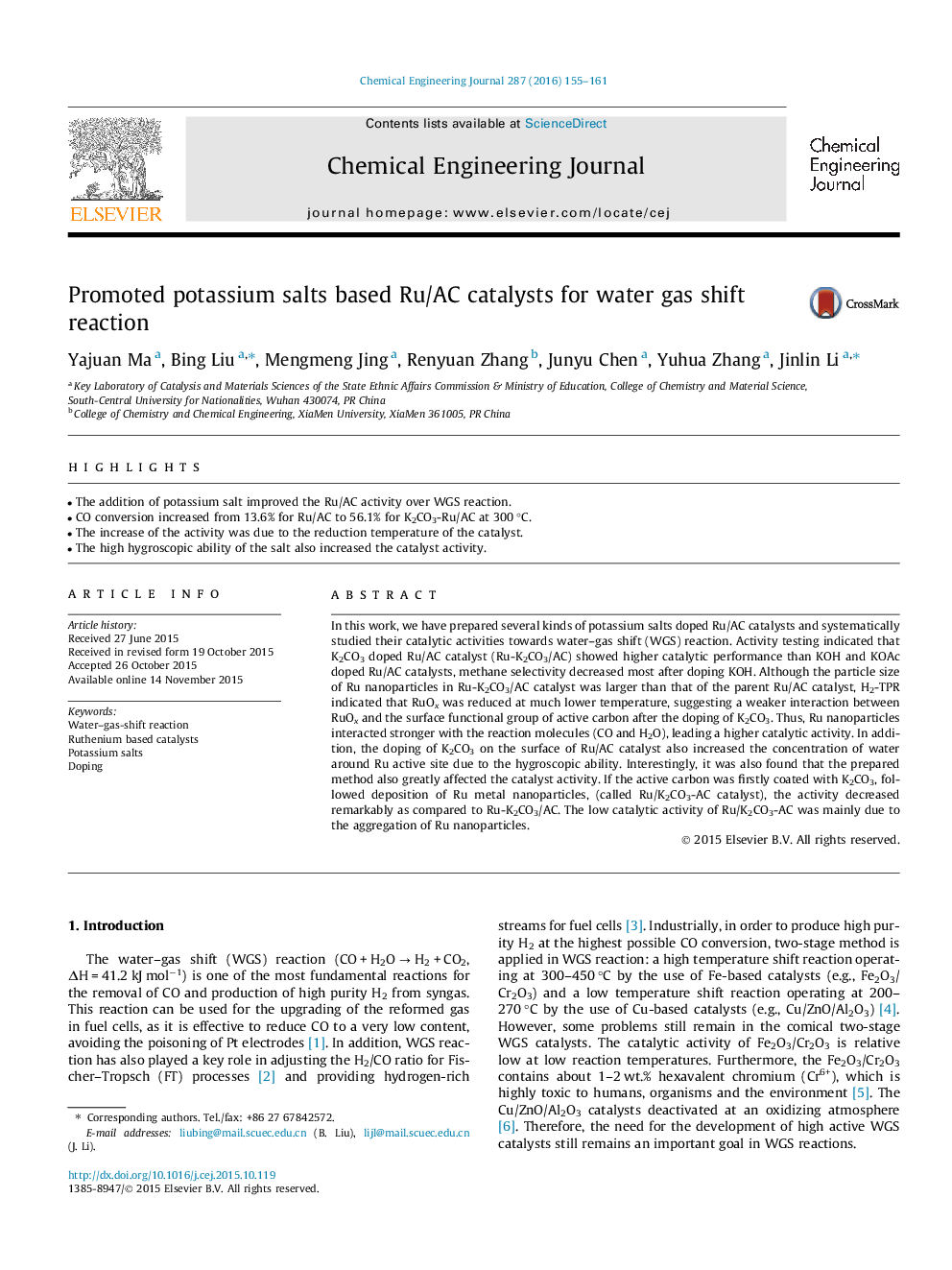| کد مقاله | کد نشریه | سال انتشار | مقاله انگلیسی | نسخه تمام متن |
|---|---|---|---|---|
| 145924 | 456354 | 2016 | 7 صفحه PDF | دانلود رایگان |
• The addition of potassium salt improved the Ru/AC activity over WGS reaction.
• CO conversion increased from 13.6% for Ru/AC to 56.1% for K2CO3-Ru/AC at 300 °C.
• The increase of the activity was due to the reduction temperature of the catalyst.
• The high hygroscopic ability of the salt also increased the catalyst activity.
In this work, we have prepared several kinds of potassium salts doped Ru/AC catalysts and systematically studied their catalytic activities towards water–gas shift (WGS) reaction. Activity testing indicated that K2CO3 doped Ru/AC catalyst (Ru-K2CO3/AC) showed higher catalytic performance than KOH and KOAc doped Ru/AC catalysts, methane selectivity decreased most after doping KOH. Although the particle size of Ru nanoparticles in Ru-K2CO3/AC catalyst was larger than that of the parent Ru/AC catalyst, H2-TPR indicated that RuOx was reduced at much lower temperature, suggesting a weaker interaction between RuOx and the surface functional group of active carbon after the doping of K2CO3. Thus, Ru nanoparticles interacted stronger with the reaction molecules (CO and H2O), leading a higher catalytic activity. In addition, the doping of K2CO3 on the surface of Ru/AC catalyst also increased the concentration of water around Ru active site due to the hygroscopic ability. Interestingly, it was also found that the prepared method also greatly affected the catalyst activity. If the active carbon was firstly coated with K2CO3, followed deposition of Ru metal nanoparticles, (called Ru/K2CO3-AC catalyst), the activity decreased remarkably as compared to Ru-K2CO3/AC. The low catalytic activity of Ru/K2CO3-AC was mainly due to the aggregation of Ru nanoparticles.
Journal: Chemical Engineering Journal - Volume 287, 1 March 2016, Pages 155–161
